
"I think that it’s my unavoidable responsibility as a photographer to vividly present and spread the idea of ecological conservation and love of life."-- Sun Jinqiang, a wildlife photographer from Shaanxi province.
|
 Sun Jinqiang |
Q: How did you get into the field of photographing wildlife?
A: I’ve been doing photography for more than 30 years. When I first started photographing wild animals, it was largely a personal hobby. But as I went deeper, I became increasingly aware of the importance of paying attention to ecological environment and taking care of wild animals.
I’m more focused on shooting wild animals, especially those that are rare and endangered in Qinling Mountains. And I mainly shoot them for my series or feature production.
Q:? What’s the biggest challenge you’ve ever met?
A: The biggest problems so far lie in the lack of attention paid to the protection of the ecological environment and wildlife within the country. The issue has received a lot of publicity and slogans are shouted many times, but the actual level of protection is far from enough.
Q: What work are you most proud of?

Click here for more photos
A: The feature photography Golden Monkeys in Qinling Mountains and it?won the gold medal at the 8th Chinese Photography Awards. These 20 images were carefully selected from millions of photos that I shot, of monkeys living in the wild in the Qinling Mountains. The shooting took five to six years, and I’d been to the deep of the Qinling Mountains hundreds of times, and had been through all kinds of hardships.
The work Charmingly Na?ve shows a little monkey drinking water by a stream. Before shooting, I’d made multiple observations, and found that after the monkeys fed themselves in the morning, they’d go to drink by a stream. So I hid myself in the woods across the stream in advance and waited for a little monkey to jump off a tree, and I clicked the shutter while it buried its head to drink on a rock by the stream. Maybe the click of the shutter alerted the little creature to my presence, as it vigilantly raised its head and looked in the direction of where I was hiding. The water on its hair around its mouth and jaw trickled down and, combined with its vigilant look, made a lovely picture. So I seized the chance to click the shutter and capture this memorable moment. And this work has become the best one in my golden monkey series and it’s loved by everyone.
Q: Can you recount a story that made a deep impression on you?
Once in the deep jungle of Qinling Mountains, I found that an adult female monkey was holding a cub that had been dead for a long time in her arms. She was holding it even while feeding herself on the tree, drinking by a brook, resting on the ground or napping on a tree. The strong maternal love moved?me almost to tears.
Q: What advice can you give to those young photographers?
A: I hope that more and more young photographers will join us. What I want to say is that, when you’re photographing wild animals, you not only have to be hardworking and resilient, you also have to learn something about the physiology and life patterns of wild animals.
|
 A baby panda sits beside her mother at the mouth of a cave. Pandas usually mate in mid-March and give birth in August. The habitat of Qinling giant pandas encompasses nine counties in Shaanxi province - Foping, Yangxian, Taibai, Zhouzhi, Ningxia, Liuba, Chenggu, Ningqiang and Fengxian. According to research, the Qinling giant panda has a population of only around 300, and is rare and precious. |
|
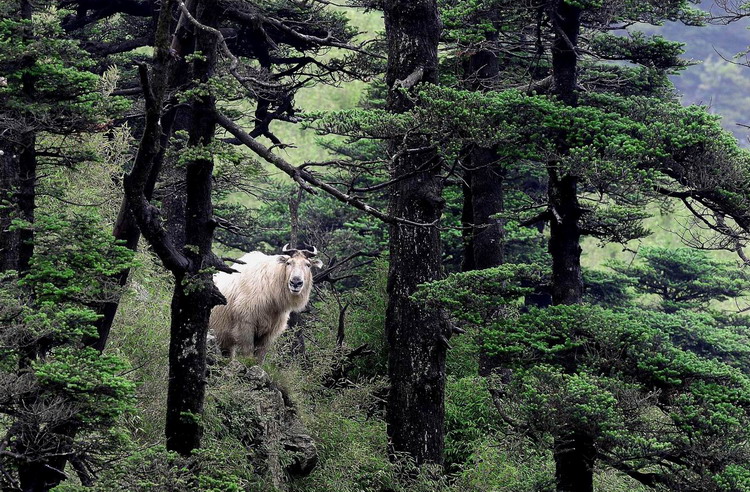 A male takin seeks a mate in a mountain forest in the Qinling Mountains, a rugged range dividing north and south China. Living high in the mountains, above 2,000 meters, takins are often in heat from late June to late July and mate during this period. The Qinling takin is an animal unique to the Qinling Mountains. Its golden coat mixed with white sees locals call them “white sheep” or “Yangzi”. Takins have long and strong front legs with short and curved rear ones and cloven hooves. With a population of no more than 5,000 they are rare. They are gregarious, usually living in groups of 20 to 30. Their habitat is forests at altitudes of 1,050 to 3,600 meters, subalpine coniferous forests and alpine shrub meadows. They feed in the morning and at dusk on Qinling arrow bamboo bark, fir and tender shoots of shrubs. |
|
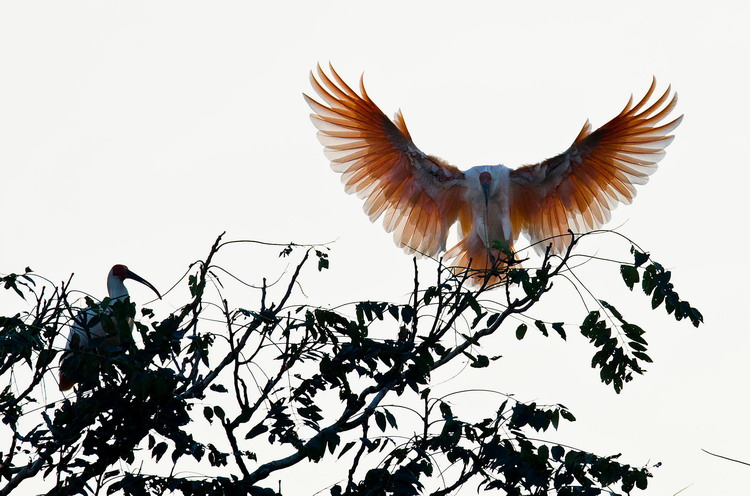 Two?crested ibises perch in a tree. Crested ibises are rare birds. Since the mid-20th Century, the influence of humans has caused difficulty in adapting to changes in the environment and their quantity is declining sharply. Country folk regard them as a symbol of good luck and call them "lucky bird". Crested ibises usually perch on tall trees and fly down to paddy fields, marshes and mountain streams when foraging locusts, frogs, small fish, snails and loach. The world’s wild crested ibis was found again?in Yang County, Shanxi province in the summer of 1981 with a protection and observation station established two years later. After decades of endeavor, there are now nearly 2,000 crested ibises in China. |
| ?
 A golden snub-nosed monkey remains on the alert as it leans over to drink water. Golden snub-nosed monkeys mainly live in mountain forests of coniferous and broad leaved trees. They are gregarious and feed on wild fruits, shoots and leaves. They have an estimated population of 3,000 to 5,000. In summer, they live at high-altitude, around three kilometers, while in winter or early spring, they live at about two kilometers. There are only a few dozen golden snub-nosed monkeys in zoos in China. |
|
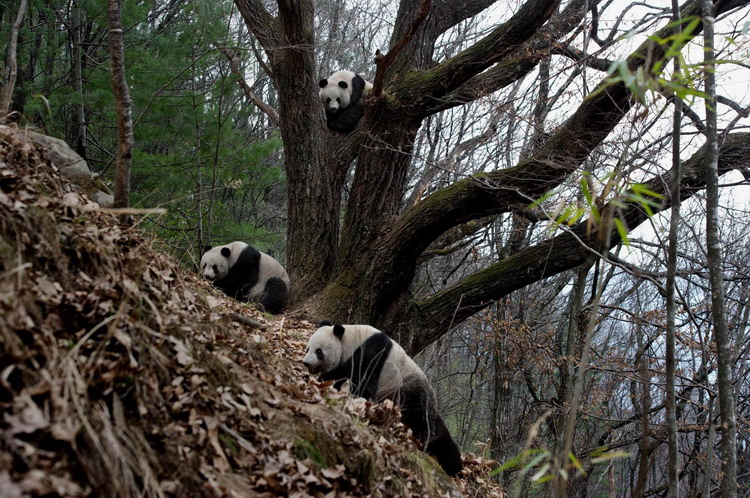 Two male pandas try different poses to lure the female panda?on the tree. Around March to April every year, when giant pandas are in heat, they move around in pairs. Two to three male pandas would even get into a fierce fight in order to be able to mate with a female panda.?Sometimes they’d not be frightened away even when we were shooting photos just 2 to 3 meters away from them. So we could capture those rare moments of male pandas fighting with each other and female and male pandas mating. |
|
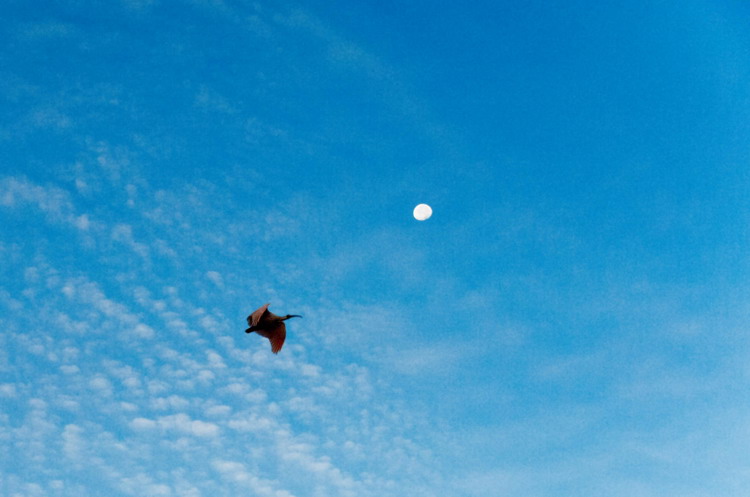 |
| ?
 Two takins roam in the grasslands at high altitude. |
|
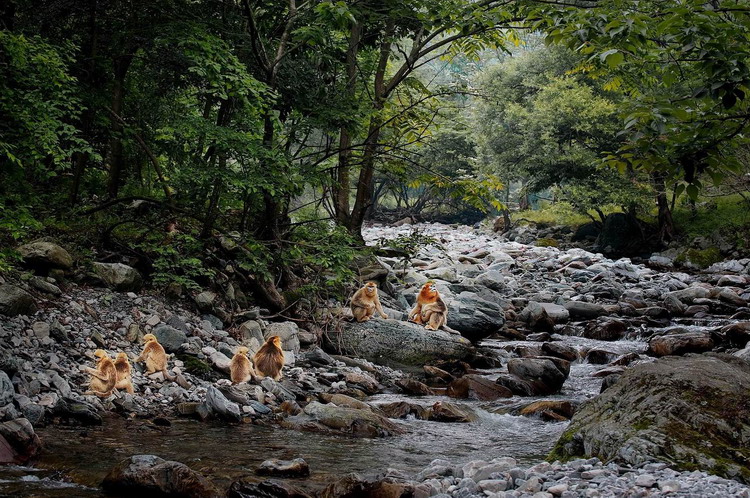 |
|
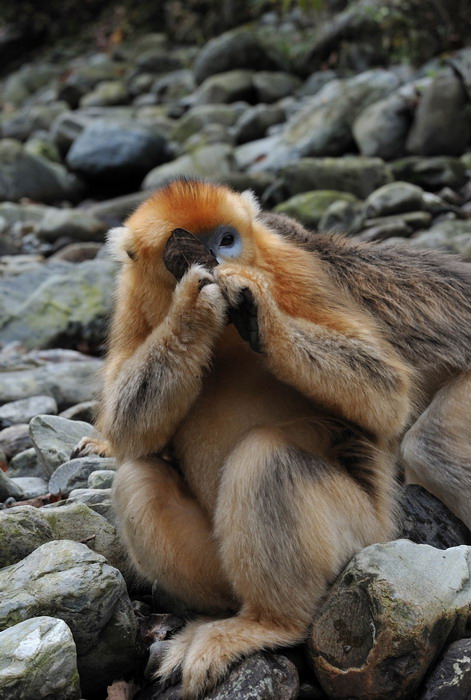 |
|
 |
|
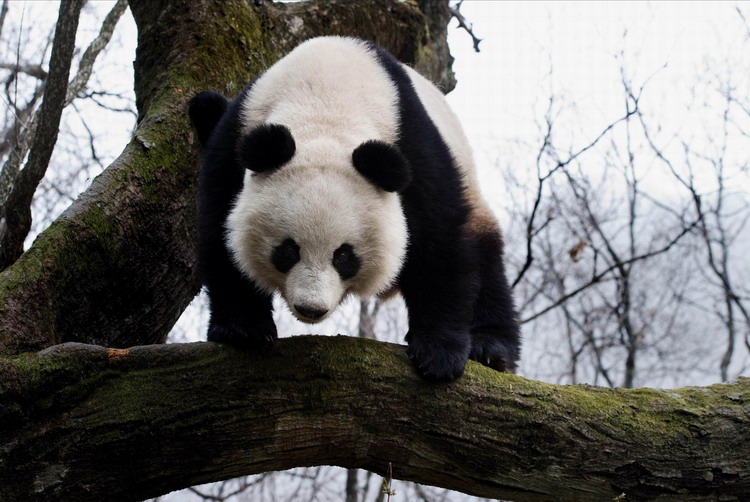 |
|
 |
|
 |
|
 |
|
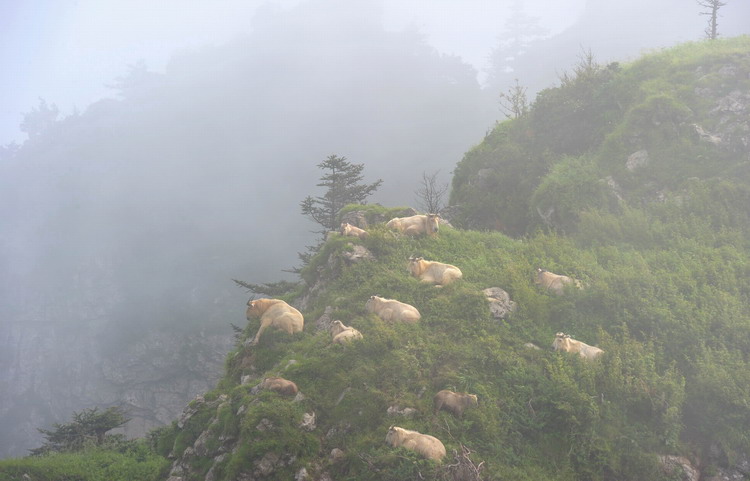 |
|
 |
|
 |
| ?
 A takin seeks food in a mountain forest in Qinling. Takins usually migrate from their high-elevation habitat to lower-altitude areas for winter. |
|
 |

Qinling Moutains dubbed as China's Yellowstone
The Qinling Mountains are a major east-west mountain range with a length of 1,600 kilometers from west to east and a width of 200 km-300km from north to south in China.
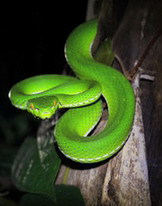
Nighlife on the wild? side
The ranges covers an area of 120,000 square kilometers and provides a natural boundary between the North and South of the country, climatically and geographically. It also supports a huge variety of plants and wildlife, some of which are found nowhere else on Earth.
The mountains are home to various rare wild animals, including 119 mammal species, 345 bird species and 657 species of vertebrates. The phrase, “Four precious species in the Qinling Mountains”, refers respectively to the giant panda, golden snub-nosed monkey, takin and crested ibis. These animals are listed as national first-class protected animals.